Organoid_Protonoesis 1 is a neurobiological-data-driven interactive transmodal installation that gives form and expression to the intricate relationship between brain-cell organoid firings and AI image generation. It is a work-in-progress that extends previous efforts such as the transLAB’s Synaptic Time Tunnel (SIGGRAPH 2023) in fusing transmodal media arts, neurobiology, and cognitive science, and artificial intelligence and machine learning.
This project introduces a real-time interface between spontaneous brain organoid activity and external stimuli, enabling unique and novel interactions between human intellect and emergent and self-organizing neural connectivity and activation. Neuronal firing data, converted to hyperedges within hypergraphs, are transformed into computational architectural morphologies, generative spatialized sound, and AI virtual entities.
Organoid_Protonoesis 1 showcases the potential of integrating real-time generative AI with biological systems, inviting participants to explore and reflect on the evolving boundaries of cognition, signal processing, and contemporary media. The current state of the project establishes real-time communication between the brain organoids in the Kosik Neurobiology Lab and the installation interface allowing for the development of a closed-loop interface between the brain organoids, human activity, and an Artificial Intelligence Diffusion model.
Organoid_Protonoesis 1 is a collaboration between the MAT transLAB and the Kosik Neurobiology Lab, with additional support from the MAT AlloPlex Studio/Lab at SBCAST.
research team:
transLAB (Marcos Novak, Director)
AI Visualizations/Artifact Design + Fabrication:/ Hardware Setup: Nefeli Manoudaki, Iason Paterakis
Audio Components/Data Analysis: Diarmid Flatley, Ryan Millett, Jazer Sibley Schwartz
Scientific Team:
Kosik Neurobiology Lab (Ken Kosik, Director) Tjitse van der Molen, Eve Bodnia
Support:
SBCAST (Santa Barbara Center for Art, Science, and Technology) (Alan Macy, Director)
UCSB MAT (Media, Arts and Technology Program @ UCSB)
The project received a David Bermant Foundation Grant
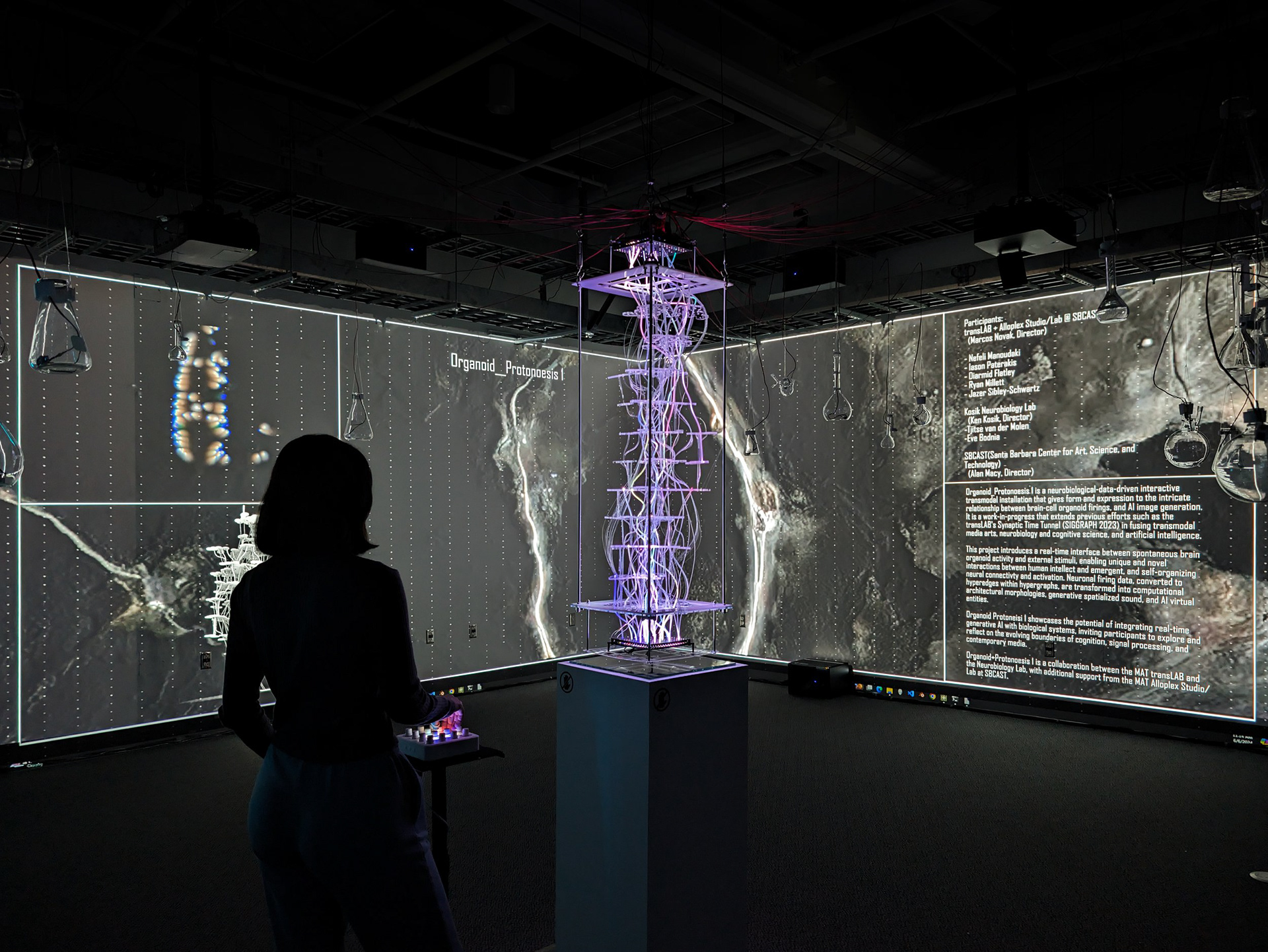
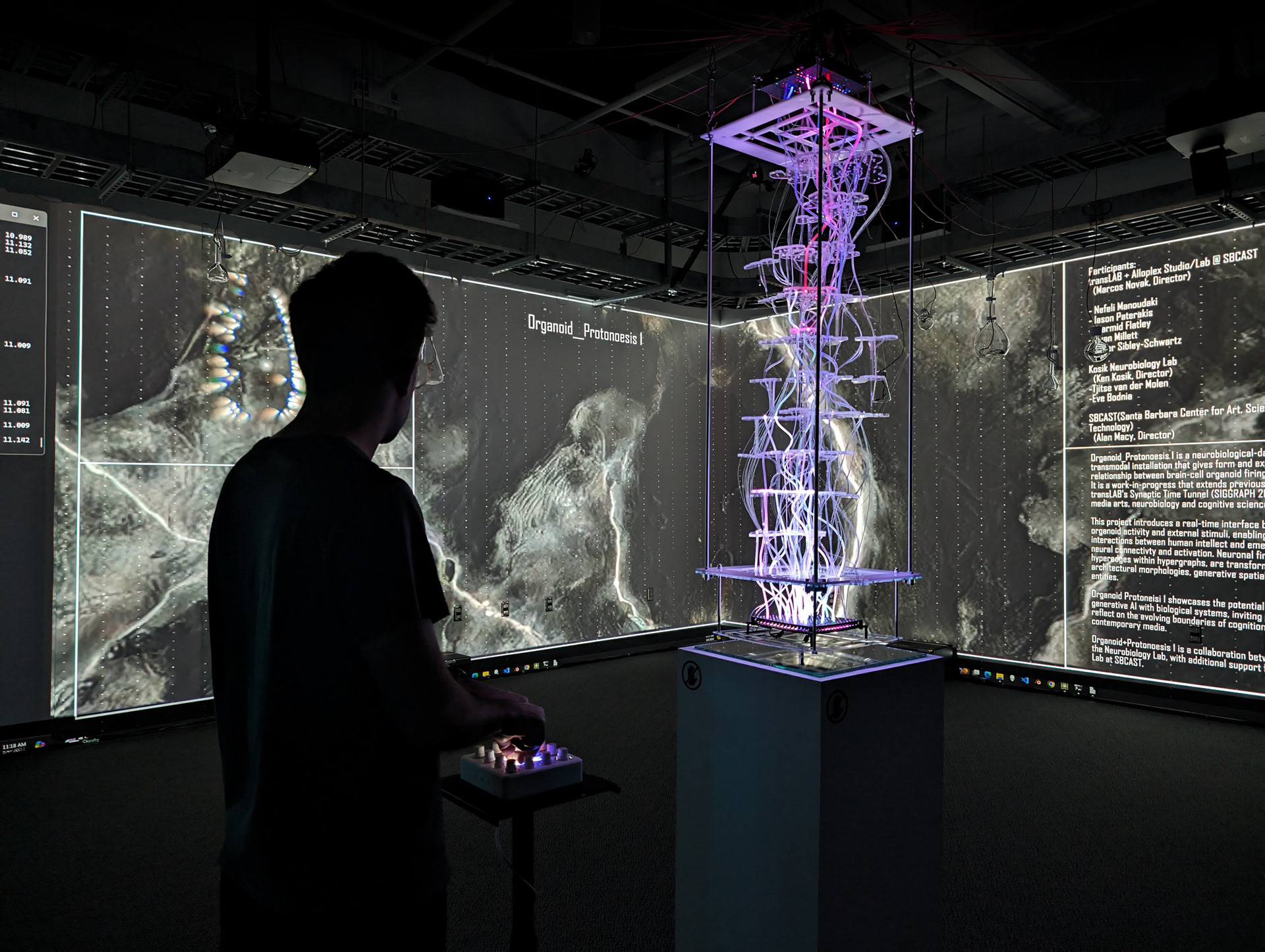
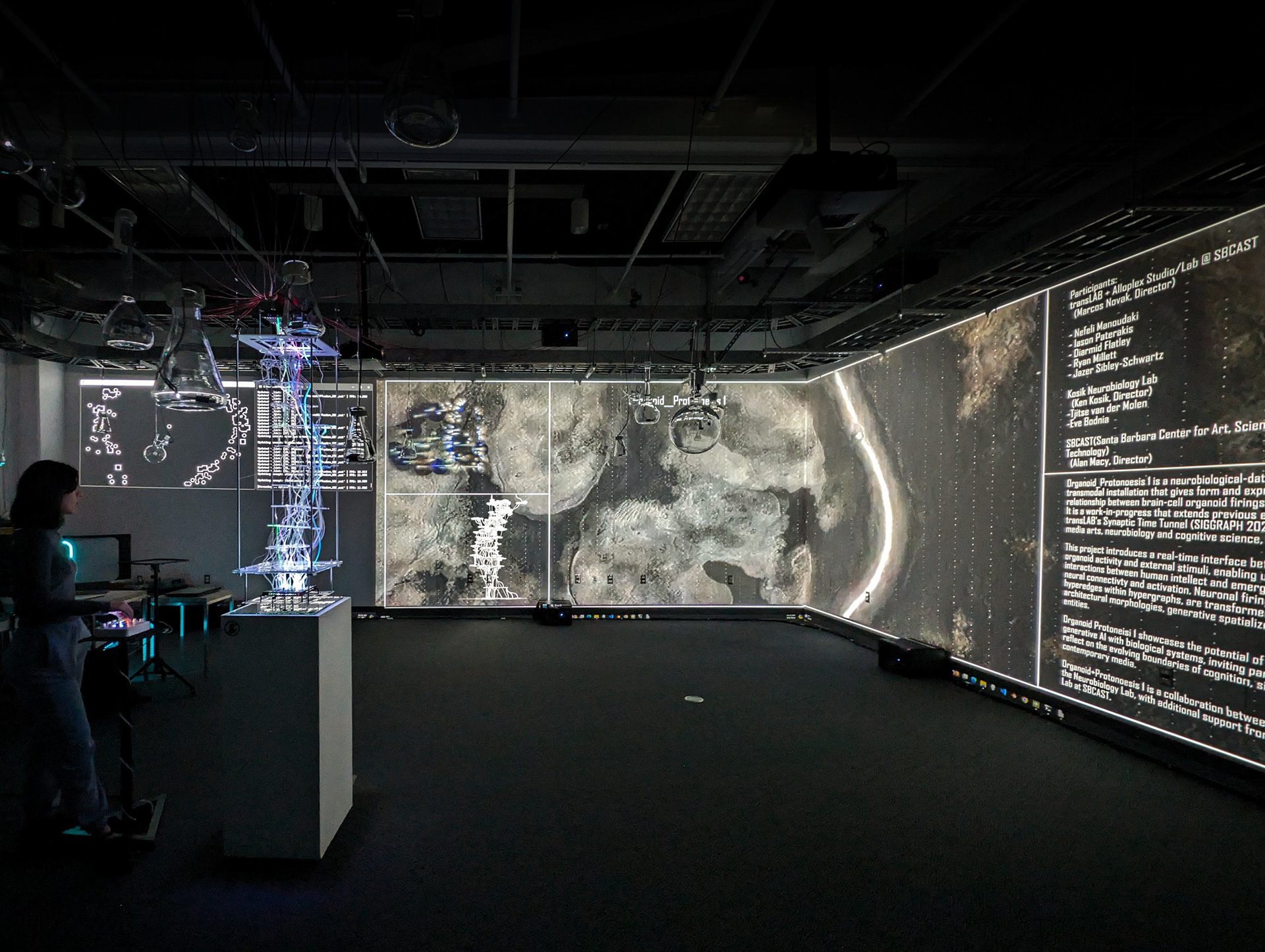


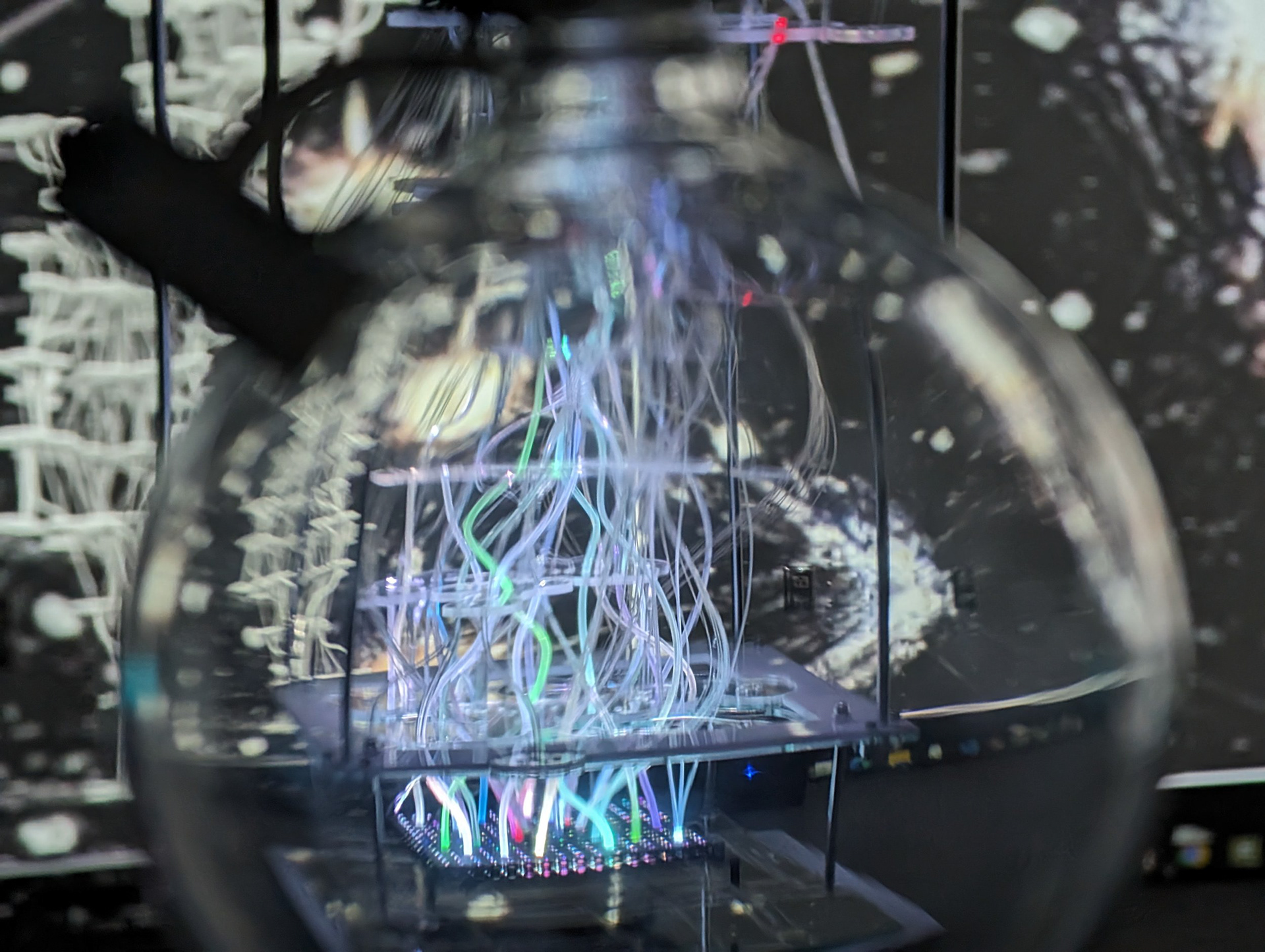
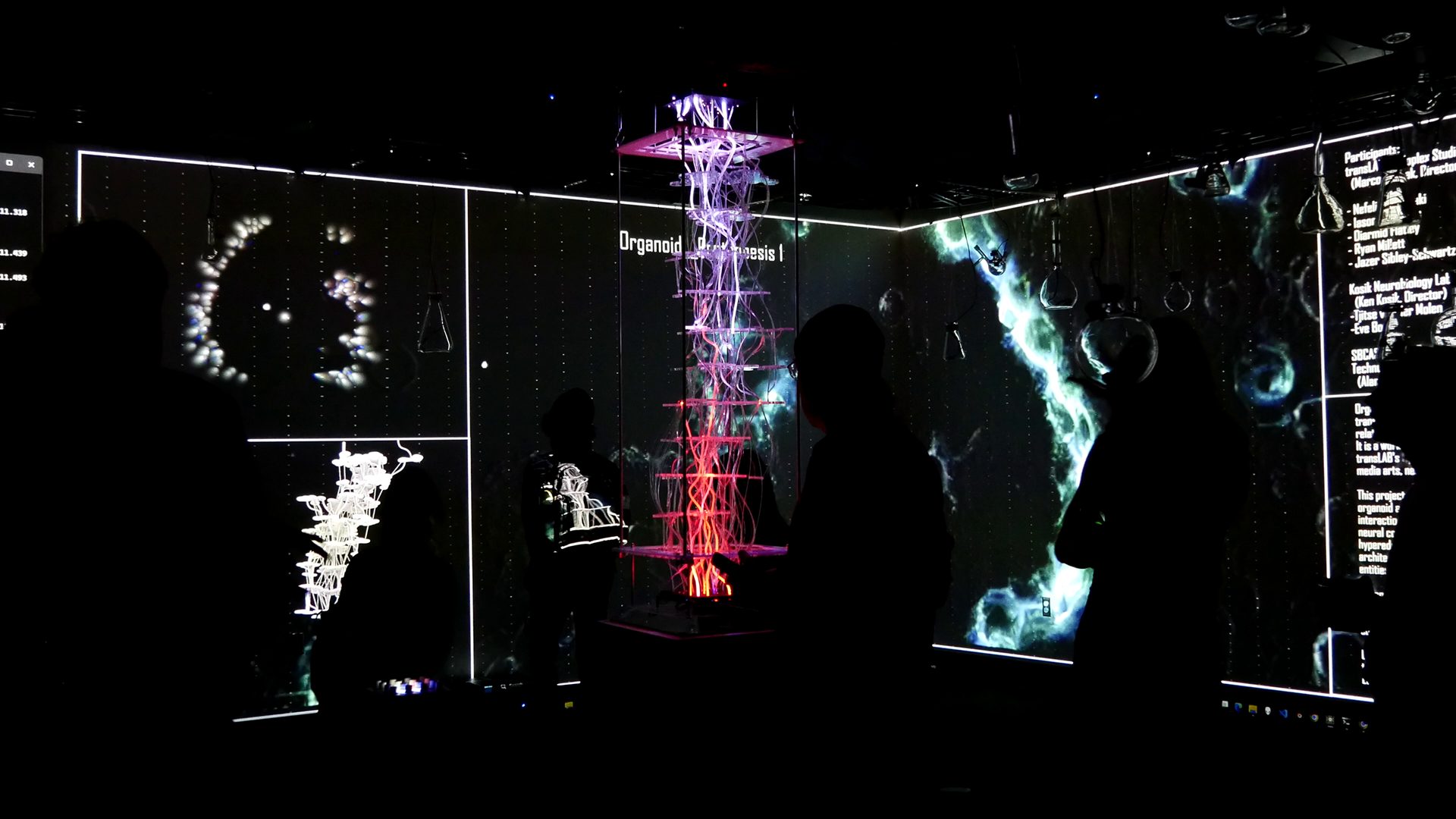

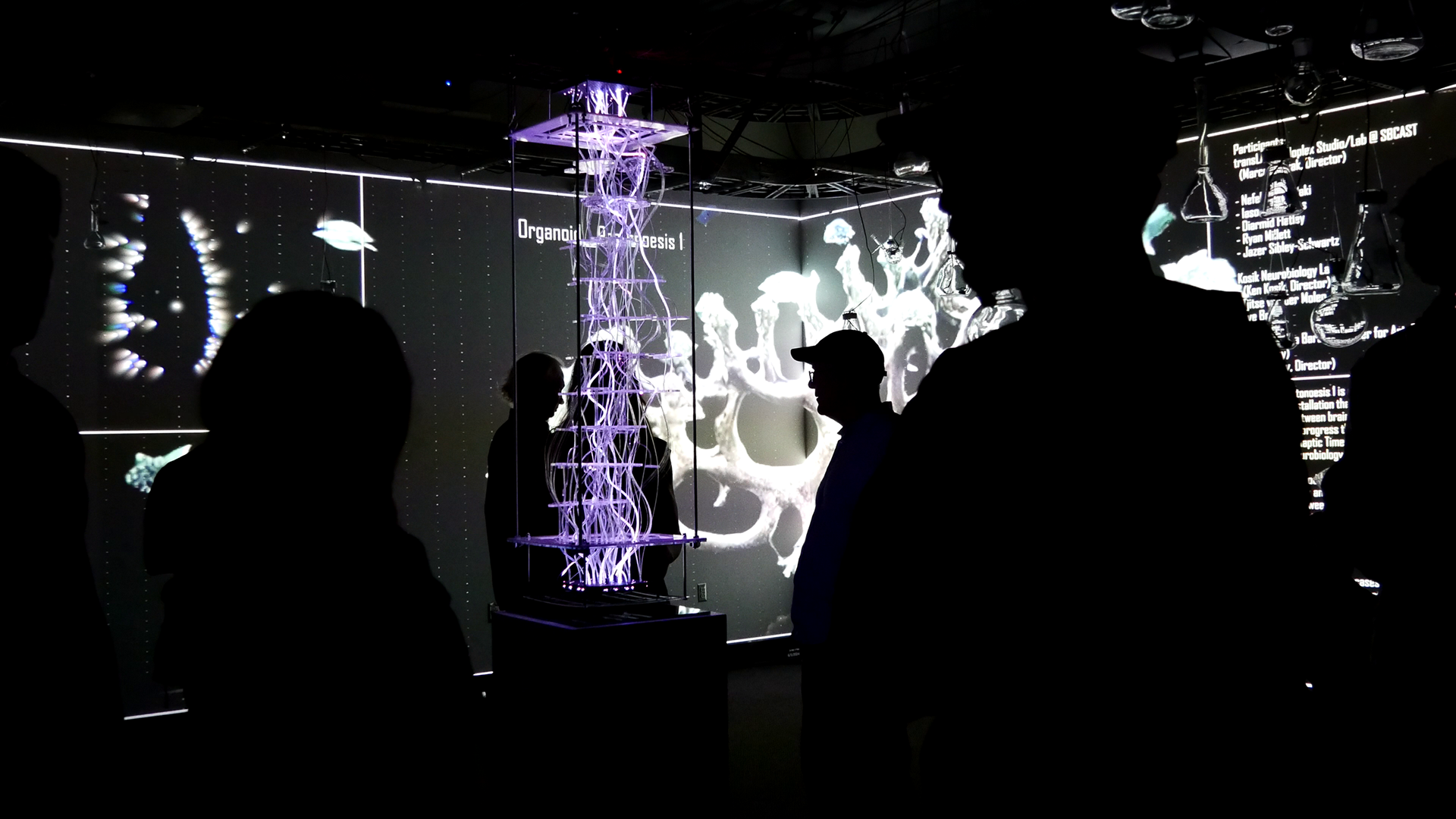
MAT End of the Year Show @ California NanoSystems Institute (CNSI) Elings Hall, MAT Program, University of California, Santa Barbara, California / June 2024 (excerpt)
MAT- End of the Year Show @ SBCAST, Santa Barbara, California / June 2024 (excerpt)]
Unite to Light the Night @CAW,Santa Barbara,California /October 2024
[funded by the Bermant Fundation]
The central artifact is a hypercolumn, where each hypergraph represents an analysis of a specific timeframe from the neuron firing time series.
This specific moment of the artifact represents half a second of spontaneous neural activity of an organoid.
Central Artifact dimensions: 40cm*40cm*1500cm.
Materials: Acrylic, Optical Fibers (Side-glow / End-glow), LED matrix, Glass
Further Explorations:
-Closed Loop between brain organoids and installation data.
-Global Organoid Orchestra (GOO).
References:
Molen, Tjitse & Spaeth, Alex & Chini, Mattia & Bartram, Julian & Dendukuri, Aditya & Zhang, Zongren & Bhaskaran-Nair, Kiran & Blauvelt, Lon & Petzold, Linda & Hansma, Paul & Teodorescu, Mircea & Hierlemann, Andreas & Hengen, Keith & Hanganu-Opatz, Ileana & Kosik, Kenneth & Sharf, Tal. (2023). Protosequences in human cortical organoids model intrinsic states in the developing cortex. bioRxiv : the preprint server for biology. 10.1101/2023.12.29.573646.
Molen, Tjitse & Lim, Max & Bartram, Julian & Cheng, Zhuowei & Robbins, Ash & Parks, David & Petzold, Linda & Hierlemann, Andreas & Haussler, David & Hansma, Paul & Tovar, Kenneth & Kosik, Kenneth. (2024). RT-Sort: an action potential propagation-based algorithm for real time spike detection and sorting with millisecond latencies. 10.1101/2024.04.08.588620.

